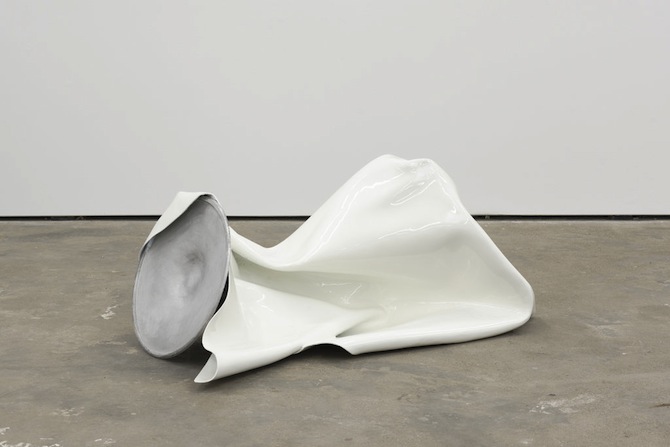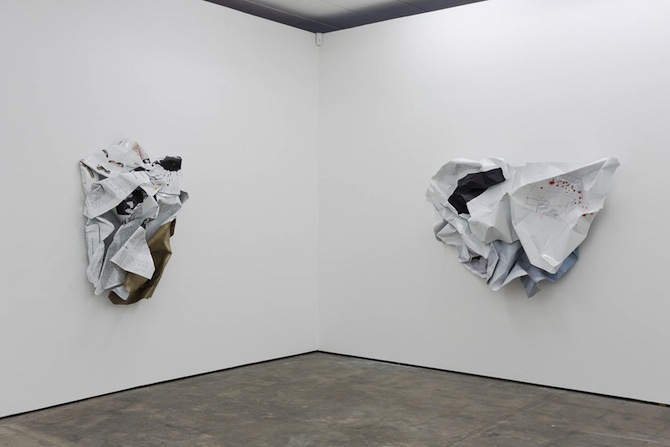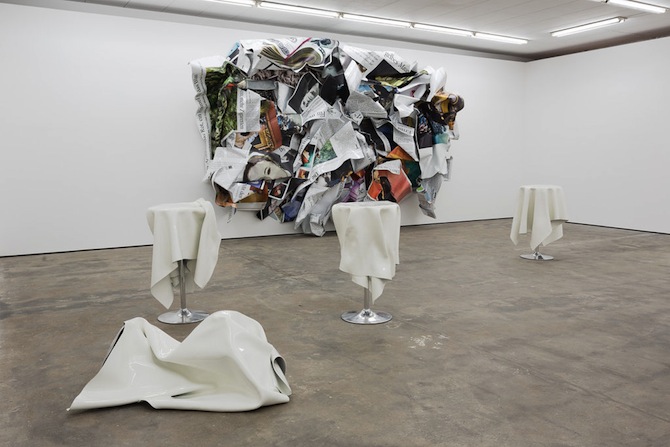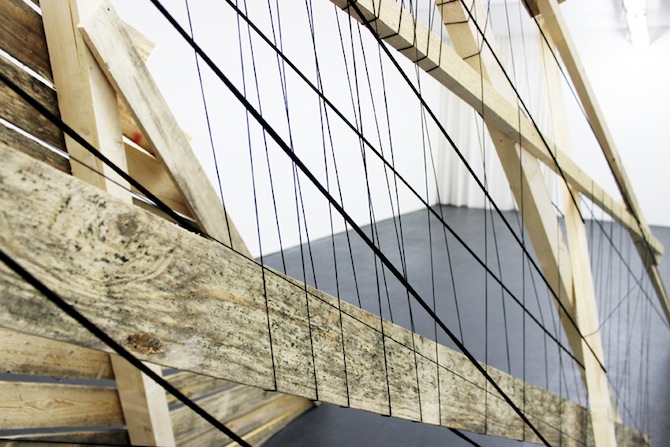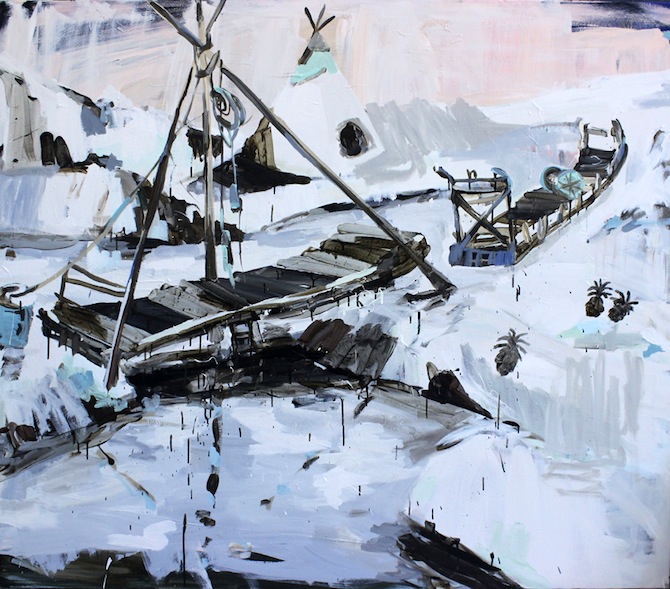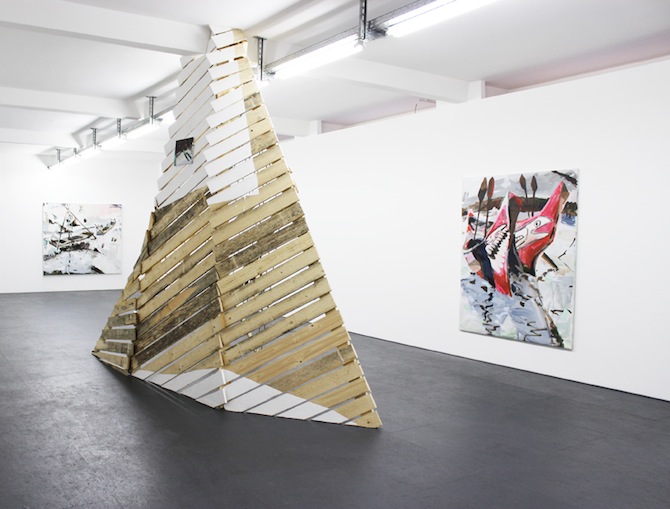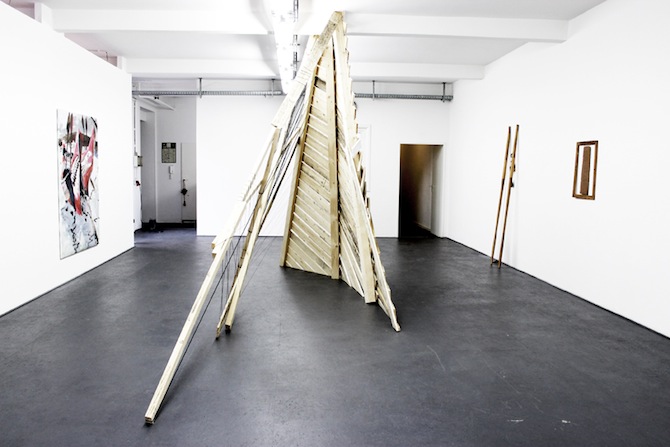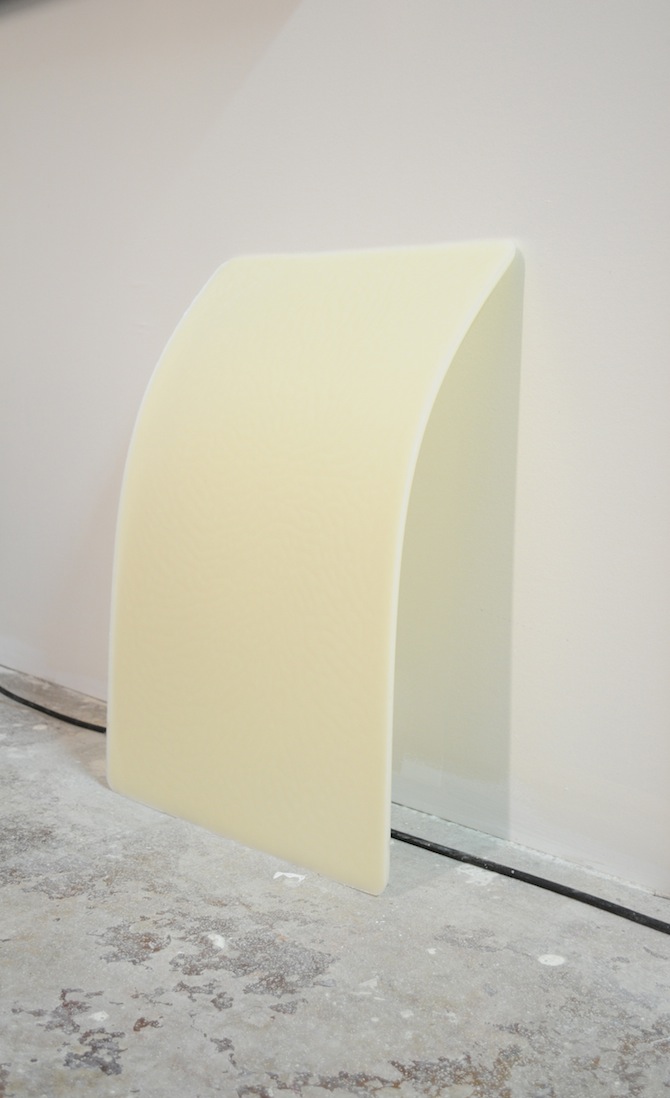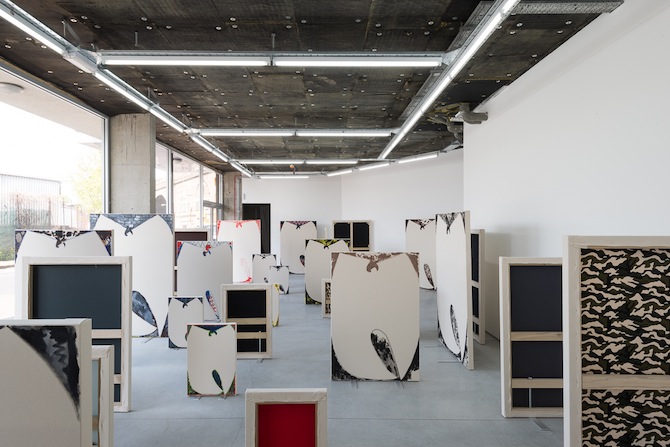


all images: Luc Fuller "Standing Paintings" / each work Untitled, 2014 / © Luc Fuller / Courtesy the artist and ROD BARTON, London
40 "Standing Paintings" currently occupy the floor space of Rod Barton's gallery in London, each displaying the outlines of Wu-Tang Clan's symbol "W" on their front side. They were created by 1989-born American artist Luc Fuller, who employs his art to explore cultural appropriation, the merging of sub- and high-culture and eventually in the meaning-production of signs, arrangements and exhibition formats. While painting is a medium commonly defined by its spatial distance to its spectators and its status as an object on a wall that is to be observed, Luc inverts this scheme and incorporates his paintings in an environment, rendering them into a "democratic" pattern. Visitors thus walk through the paths formed by his works, they enter a scene of art – a painting-scape. Also in other exhibitions that Portland-based Luc did, he repeatedly questions the classic terms of installation, materiality and space – everything is, as he once said, in "flux". In our interview with the artist, Luc told us about why and how Wu-Tang Clan's symbol is a part of his work, his fascination with subcultures and about his playful and similarly ambitious approach of reconsidering exhibition formats.






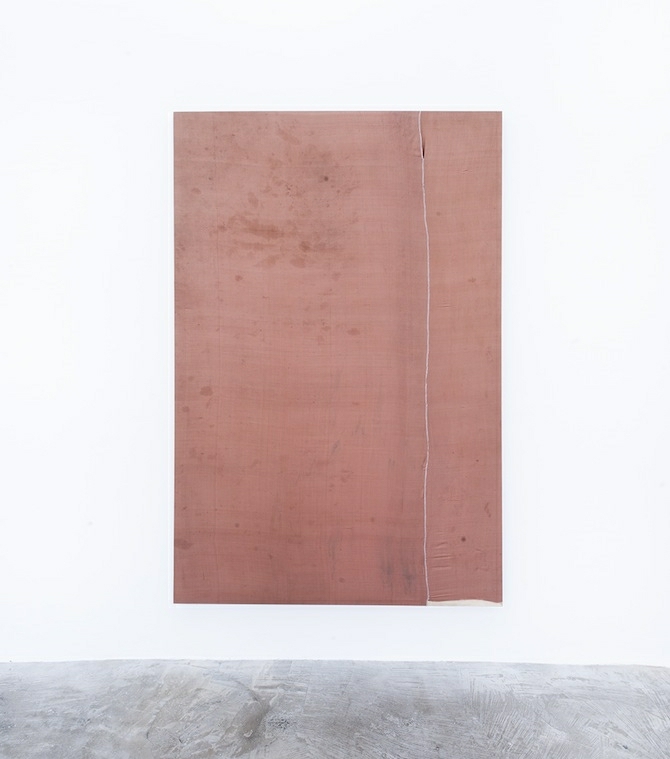
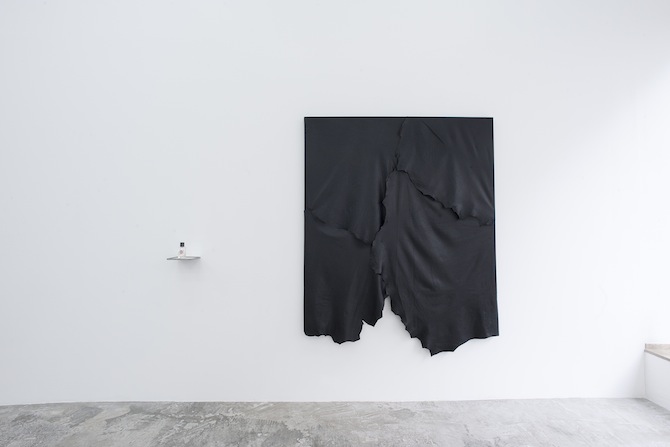
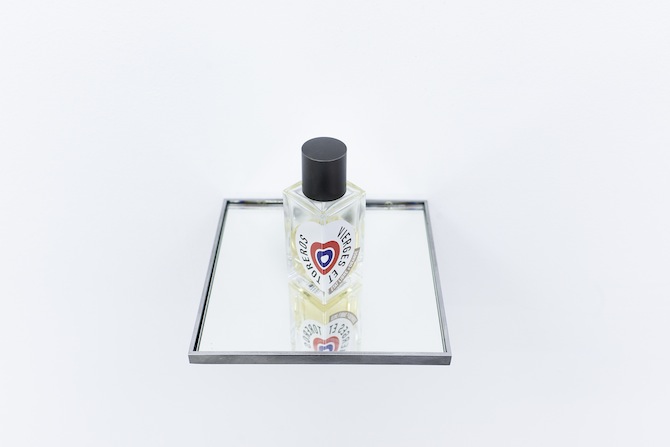
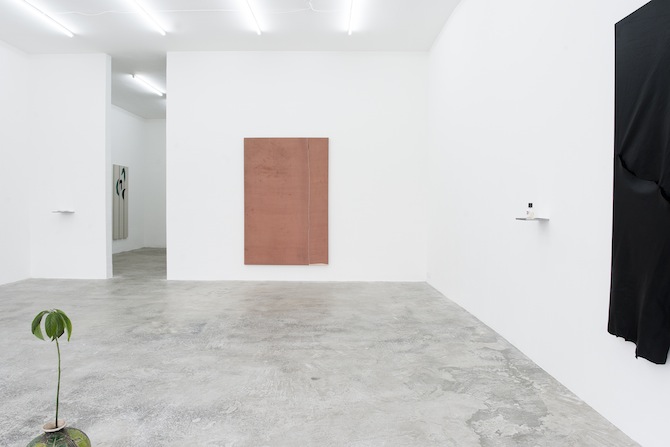

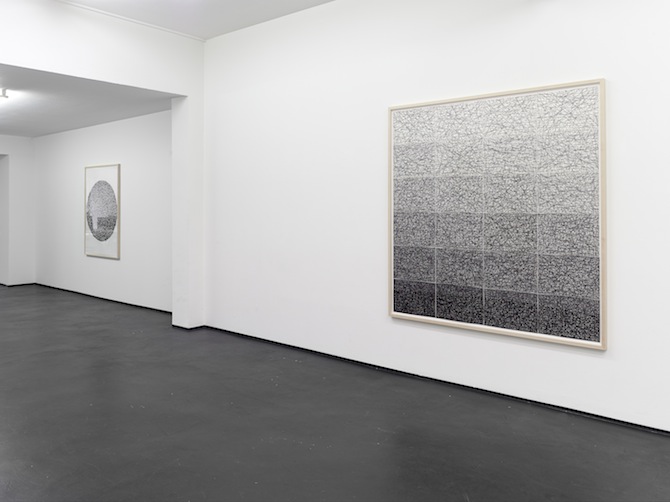
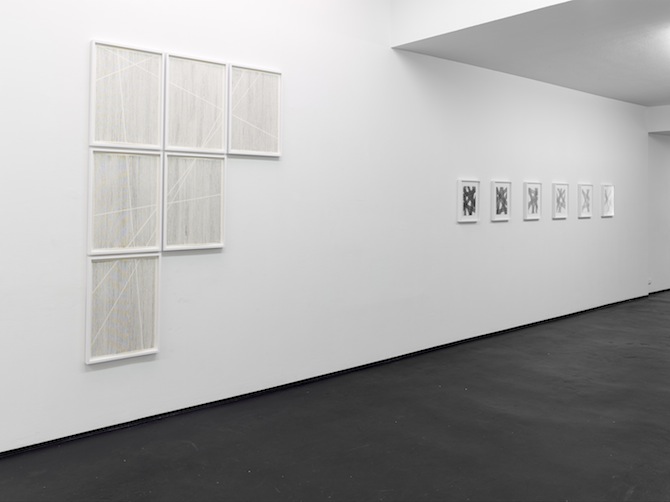

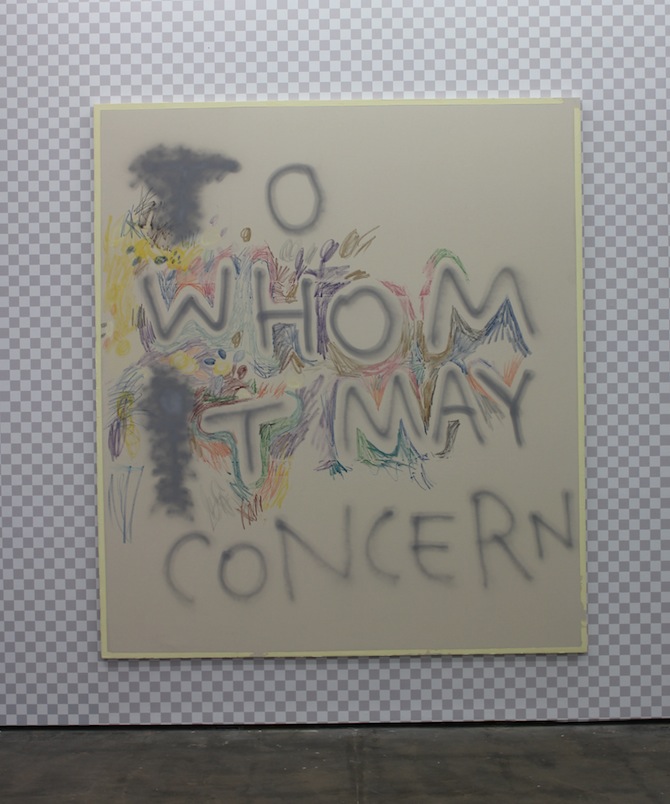
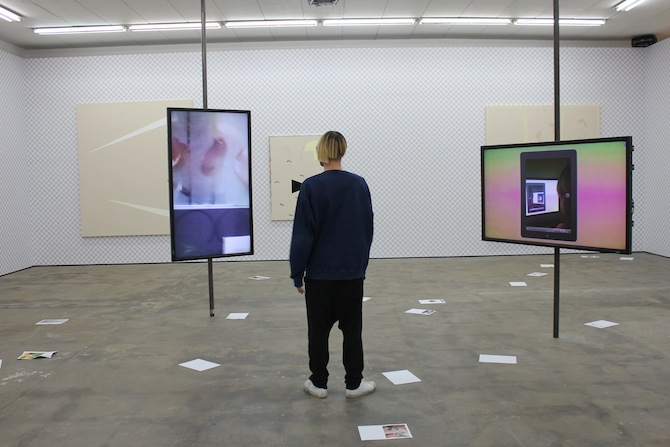 Florian Meisenberg "Somewhere sideways, down, at an angle, but very close" at Galerie Wentrup
Florian Meisenberg "Somewhere sideways, down, at an angle, but very close" at Galerie Wentrup
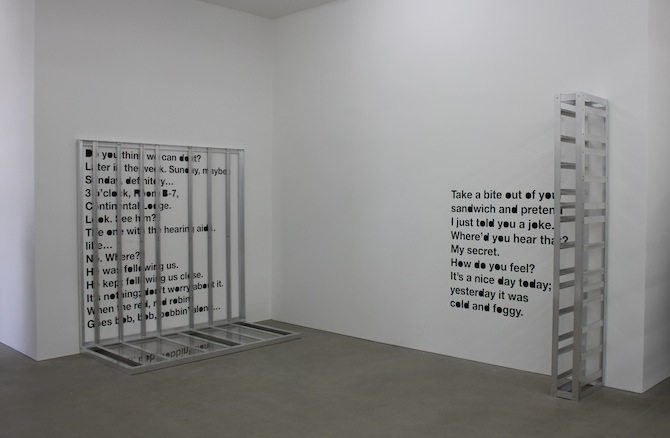 Liam Gillick "Revenons à nos Moutons" at Esther Schipper
Liam Gillick "Revenons à nos Moutons" at Esther Schipper
 Liam Gillick / detail "Hamilton: A Film by Liam Gillick" in "Revenons à nos Moutons" at Esther Schipper
Liam Gillick / detail "Hamilton: A Film by Liam Gillick" in "Revenons à nos Moutons" at Esther Schipper
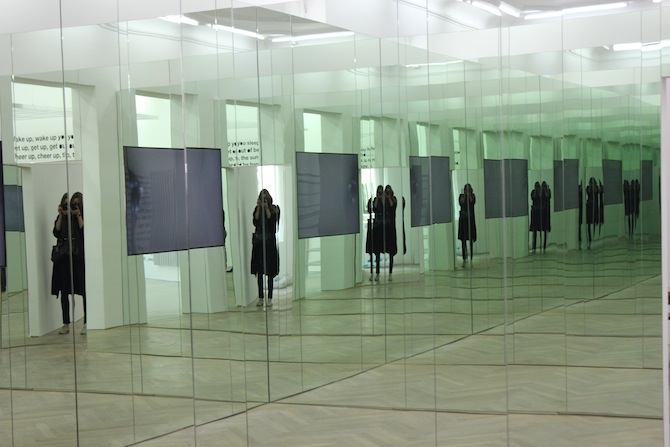 Liam Gillick "Revenons à nos Moutons" at Esther Schipper
Liam Gillick "Revenons à nos Moutons" at Esther Schipper 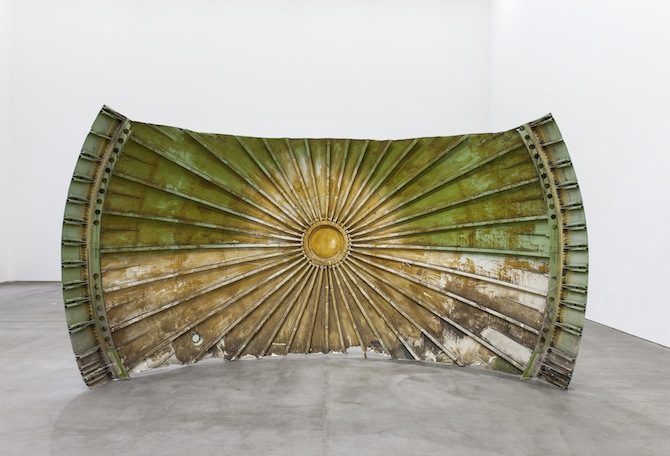
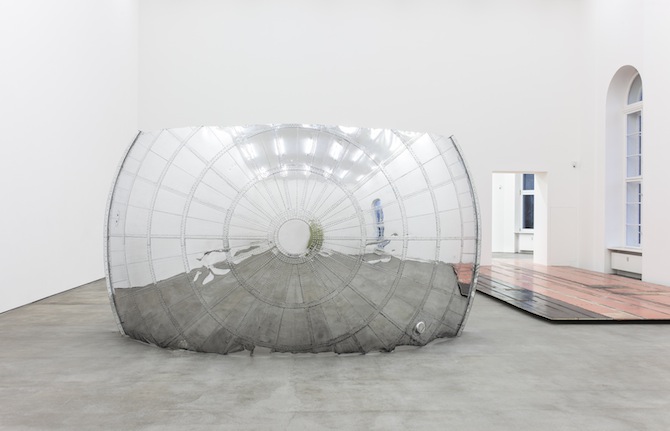


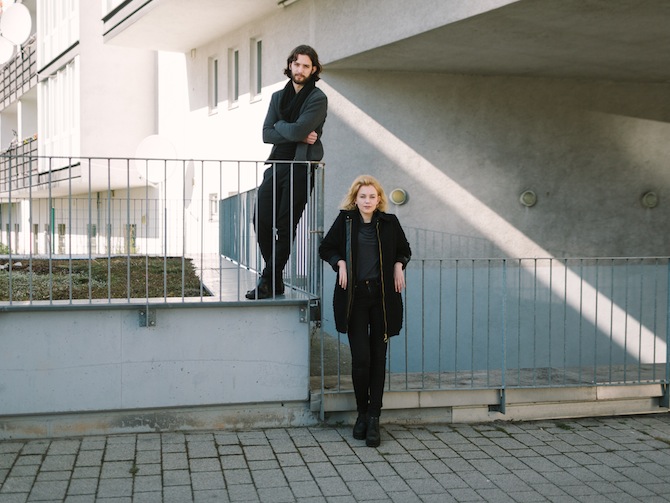
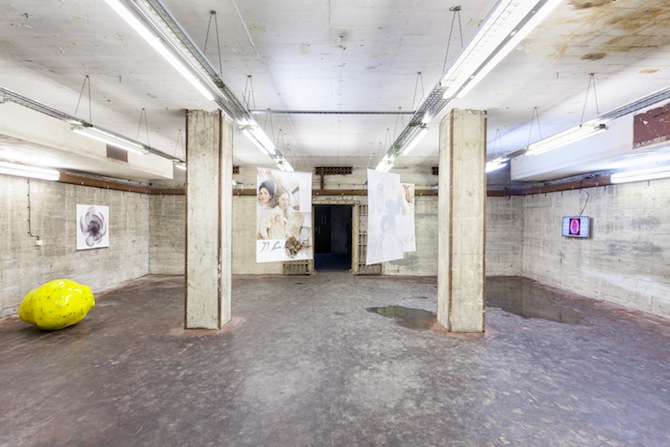


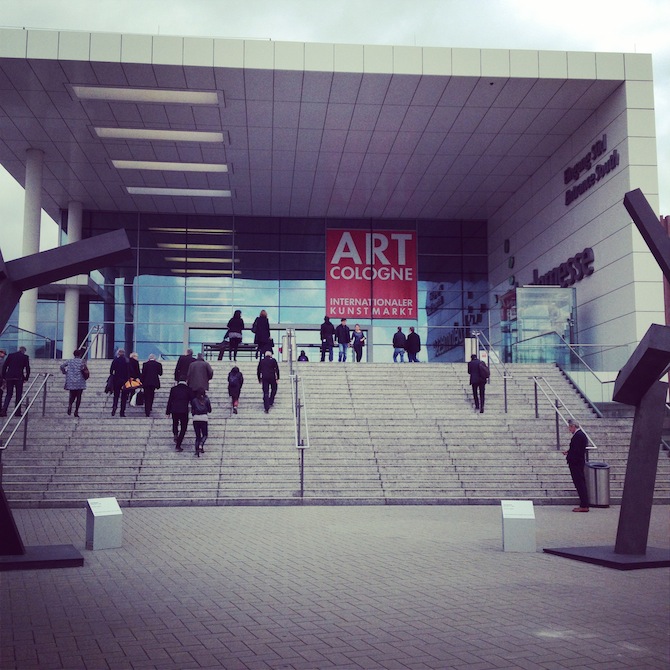 Art Cologne 2014
Art Cologne 2014
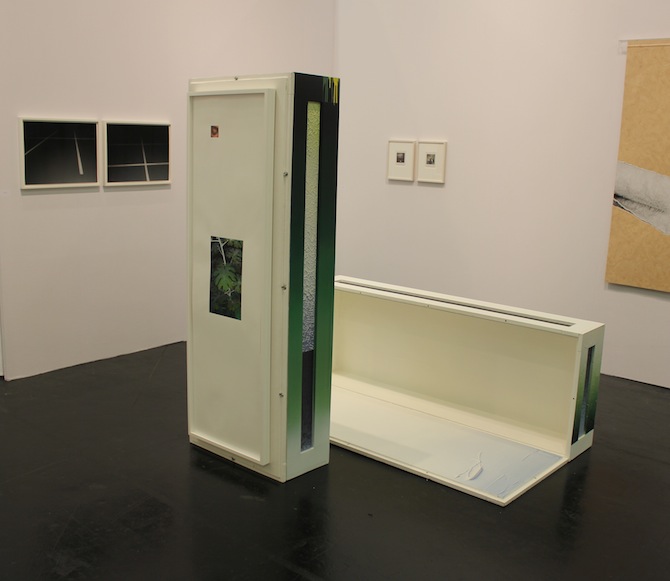
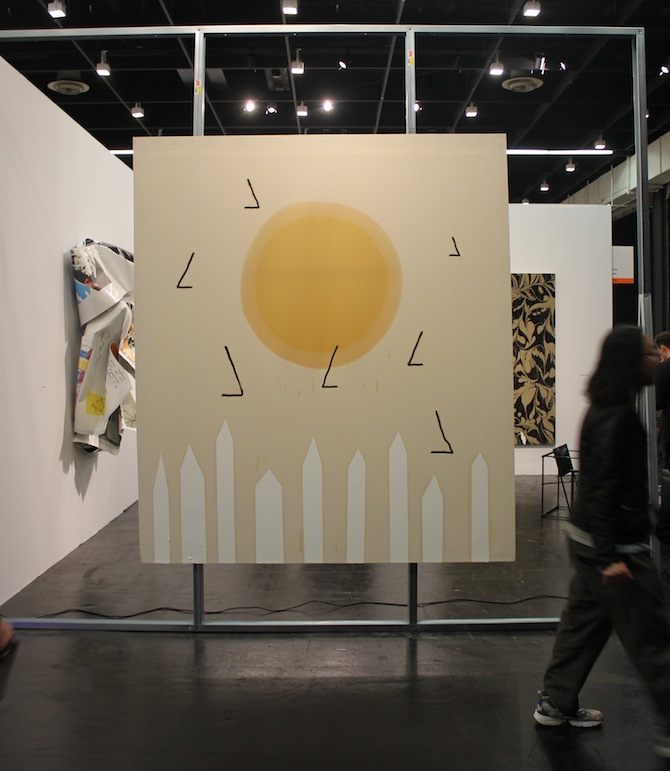 Florian Meisenberg at booth Wentrup, Berlin
Florian Meisenberg at booth Wentrup, Berlin
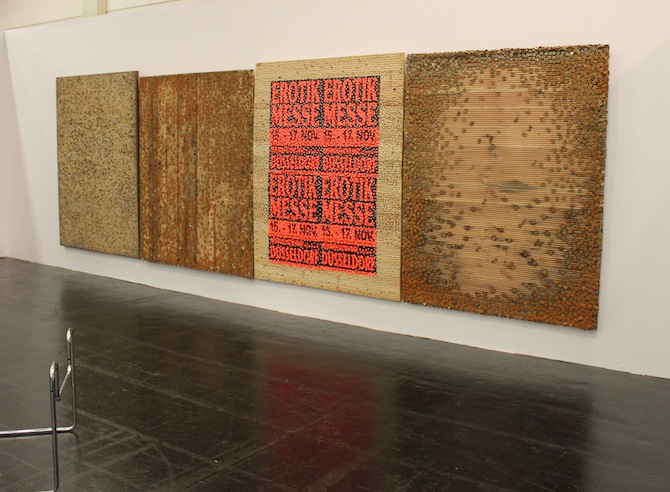 Grayson Revoir at booth Jan Kaps, Cologne
Grayson Revoir at booth Jan Kaps, Cologne
 Michail Pirgelis at booth Sprüth Magers, Berlin, London
Michail Pirgelis at booth Sprüth Magers, Berlin, London
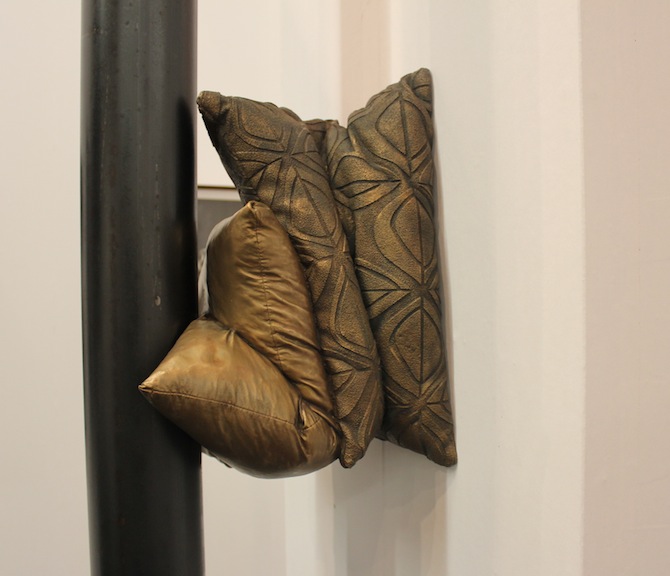 Tatiana Trouve at booth Johann König, Berlin
Tatiana Trouve at booth Johann König, Berlin
 Paul Cowan and Tony Lewis COLLABORATION at booth Shane Campell, Chicago
Paul Cowan and Tony Lewis COLLABORATION at booth Shane Campell, Chicago
 David Ostrowski at booth Peres Projects, Berlin
David Ostrowski at booth Peres Projects, Berlin
 Liam Gillick at booth Kerlin Gallery, Dublin // all images by artfridge // Courtesy the galleries // © the artists
Liam Gillick at booth Kerlin Gallery, Dublin // all images by artfridge // Courtesy the galleries // © the artists
